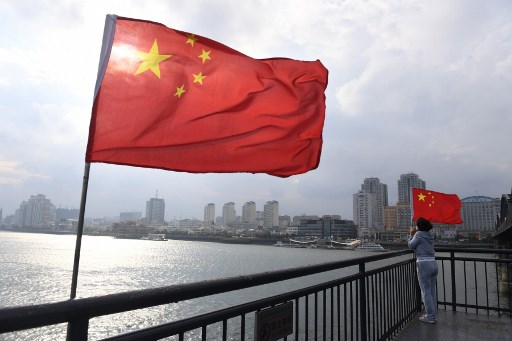
The dramatic diplomatic thaw on the Korean peninsula is sparking an unexpected economic windfall on the Chinese border, where property prices are skyrocketing. / AFP PHOTO
BEIJING, China (AFP) — China and the US ended the second day of high-stakes trade talks Friday with “big differences”, Beijing said, leaving the world’s two largest economies on the brink of a trade war that could have knock-on effects on the global economy.
The talks were aimed at forestalling momentum towards the looming conflict, with both sides prepared to pull the trigger on tariffs that could affect trade in billions of dollars of goods.
“Both sides recognize there are still big differences on some issues and that they need to continue to step up their work to make progress,” China said in a statement released by the official Xinhua state news agency.
The discussions promised a potential off-ramp for the trade conflict — US President Donald Trump has threatened to levy new tariffs on $150 billion of Chinese imports while Beijing shot back with a list of $50 billion in targeted US goods.
“The two sides exchanged views on expanding US exports to China, trade in services, bilateral investment, protection of intellectual property rights, resolution of tariffs and non-tariff measures,” Xinhua said.
It added that they had reached “a consensus in some areas”, without elaborating.
The countries agreed to establish a “working mechanism” to continue talks, it said.
The announcement followed comments by Treasury Secretary Steven Mnuchin earlier in the day that the two sides were having “very good conversations”.
However, American officials declined to give further details of the discussions.
– Detailed List –
China is confused about what the US actually wants, said Zhang Monan, a researcher at the influential think-tank China Center for International Economic Exchanges.
The American pressure on Beijing has heightened, she said, even as Beijing has taken several steps to liberalize its markets.
Those reforms include a timeline to lift foreign ownership restrictions for automakers, permitting foreign investors to take controlling stakes in some financial firms, and on Friday, allowing foreign companies to trade iron futures on domestic exchanges.
But a list of demands presented to Beijing before the negotiations got under way showed such piecemeal reforms fell far short of US expectations.
The document, divided into eight sections, was presented as a starting point for negotiations, according to Bloomberg News.
The asks included cutting China’s trade surplus with the US by at least $200 billion by the end of 2020, lowering all tariffs to match American levels, eliminating technology transfer practices, and cutting off support for some industries fostered by China’s industrial policies, Bloomberg reported.
Industrial policy
Liu He, vice premier in charge of the economy, led the discussions for China.
Known as President Xi Jinping’s right-hand man on economic matters, Liu was noticeably absent from Xi’s speech Friday morning commemorating the birth of Karl Marx and the continued relevance of his theories to China.
The speech alluded to Beijing’s determination to keep true market capitalism at arm’s length — a key area of concern for the American delegation that has balked at China’s state-led industrial policy and fostering of domestic industry.
Friction is highest over China’s “Made in China 2025” programme, designed to spring China from a maker of sports shoes and denims into high-tech goods.
For Beijing, recent moves by Washington to ban US sales to telecom giant ZTE and the reported opening of a similar probe into goliath Huawei, have reinforced the wisdom of the policy.
A spokesperson for the Ministry of Commerce said China had taken up the ban with the US delegation.
“The Chinese side made solemn representations with the US in respect of the ZTE Corporation case” the commerce ministry statement said, adding that the Americans said they would relay the issue to Trump.
“The trade friction between the US and China is a longterm issue, this is not something that can be solved in the short term,” Zhang said.
– Trade data –
The talks may have received some tailwinds from the latest trade data out of Washington, showing the US global trade deficit narrowing in March.
The goods deficit with China fell 11.5 percent from February to $25.8 billion, but analysts cautioned seasonal factors like China’s New Year holidays were likely at play.
Bilateral trade in coming months could be hurt by the US and Chinese buyers planning to avoid tariffs, with news this week that China may already be downsizing its soybean imports from the US.
“Whatever they’re buying is non-US,” said Soren Schroder, CEO of agricultural giant Bunge Limited.
“They’re buying beans in Canada, in Brazil, mostly Brazil, but very deliberately not buying anything from the US,” Schroder said in the interview with Bloomberg News on Wednesday.
Soybeans were China’s largest import from the US last year, worth $14 billion
© Agence France-Presse








